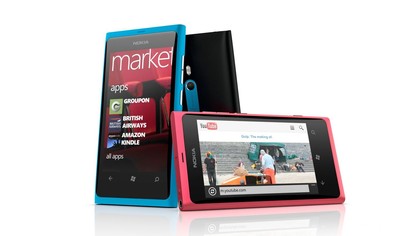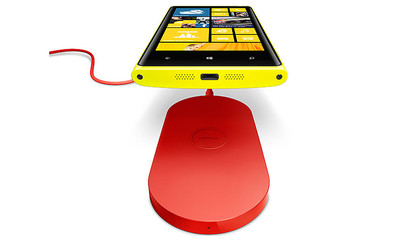Nokia and Windows Phone: Game over or game on?
We take a look at the fortunes of the Finnish firm
And to compound that, the launch of Windows Phone 8 didn't help things in terms of timing; consumer awareness of a new range of handsets coming in November contributed to slow sales of the Lumia brand in Q3.

Pierce was quick to jump on that point, suggesting that the Windows Phone 7-powered range of Nokia handsets had become another retail choice:
"The Nokia Lumia 610 and 800 have never been selling better than they are now; they're positioned very competitively and [retail staff] are more happy selling it now as they can enhance the messages that it all the benefits in terms of SkyDrive, Office, Xbox [that Windows Phone 8] has. Early signs, in terms of sales, show there's strong interest in that.'
It's been widely reported that Nokia was forced to slash the price of its Windows Phone 7 handsets in the lead-up to the next iteration of the OS in order to clear the surplus stocks – cuts of up to 15% on handsets now mean it has strong propositions in the PAYG space with the aforementioned phones.
Windows Phone 7.8 could present a headache for Nokia a few months down the line
.
But these handsets could present a headache a few months down the line, when they're stuck on Windows Phone 7.8 (which has still yet to launch – Pierce tells us that isn't stifling sales 'And when it comes, a huge base will be able to upgrade') and the flagship phones will be running Windows Phone 8, with many apps that will only run on the newer platform.
Get daily insight, inspiration and deals in your inbox
Sign up for breaking news, reviews, opinion, top tech deals, and more.
With Windows Phone being such a nascent platform though, this kind of division is necessary to propel it forward – every OS has a history of abandoning the early adopters when it attempts to become more mainstream, and Nokia was forced to ride the same current.
But how is this once-great brand attempting to offer something unique in the face of the merciless competition? Ideas like polycarbonate shells, innovative camera optics and inbuilt music services help give it an edge over the Windows Phone competition, and give consumers something different to consider when browsing at their local phone emporium.
It's a strategy to be commended; aside from the obvious benefit of not being accused of copying the designs of another firm, which can be costly even when innocent, Nokia is working to prove that not everyone clamours for the shiny aluminium phone, that there are millions looking to differentiate themselves more.
However, therein lies the company's biggest failure since its rebirth. While alternative and colourful designs will attract many, there are far more consumers out there swayed by the super-svelte, the impossibly thin, the brushed aluminium designs that can still house all of Nokia's impressive technology.
By stubbornly refusing to go down this path, Nokia is creating a rod for its own back – instead of consumers being attracted to a design then asking for reasons to buy it, Nokia is being forced to spend many hours educating retail staff in the benefits of Windows Phone and its technology, especially when the weighty 920 is compared to the lighter-than-air iPhone 5 or Samsung Galaxy S3 by the uncaring customers.
If you have to tell people why your product is brilliant, you're already at a disadvantage in these hyper-competitive smarpthone wars.
With its strong feature phone market share being eroded quickly by super-cheap Android phones, and net cash shrinking with each round of financial results, Nokia (obviously) needs to make sure its Windows Phone strategy is a success
So how to sum up the last 12 months? Pierce himself stated that the brand would have liked to have seen better sales and more market share by now, and while early sales of the Lumia 920 have been promising, it's still locked as an exclusive to the EE network at a high tariff thanks to the 4G connection.

So 2013 will be a critical year for Nokia if it's going to start cutting swathes in the smartphone market, and Pierce believes the current focus is precisely geared for that: "Nokia is in a new position; we're driving towards a new goal and you'll see lots more coming with some very exciting things in the pipeline. But the most important thing is that we focus now."
That focus needs to be laser pointed on delivering what the consumer wants, not what the Finnish firm thinks it needs. The next phone needs to be something that compares with the Samsung Galaxy S4 on price, specs and design, not just one of those. It needs to say 'Nokia is back' in a way that doesn't rely on the benefits of Xbox integration or Skype to make the sale.
In short, Nokia has quietly impressed over the last year, getting itself in a position to really make a strong play for consumers' affections. Now it needs to deliver a phone that can capture that.

Gareth has been part of the consumer technology world in a career spanning three decades. He started life as a staff writer on the fledgling TechRadar, and has grew with the site (primarily as phones, tablets and wearables editor) until becoming Global Editor in Chief in 2018. Gareth has written over 4,000 articles for TechRadar, has contributed expert insight to a number of other publications, chaired panels on zeitgeist technologies, presented at the Gadget Show Live as well as representing the brand on TV and radio for multiple channels including Sky, BBC, ITV and Al-Jazeera. Passionate about fitness, he can bore anyone rigid about stress management, sleep tracking, heart rate variance as well as bemoaning something about the latest iPhone, Galaxy or OLED TV.